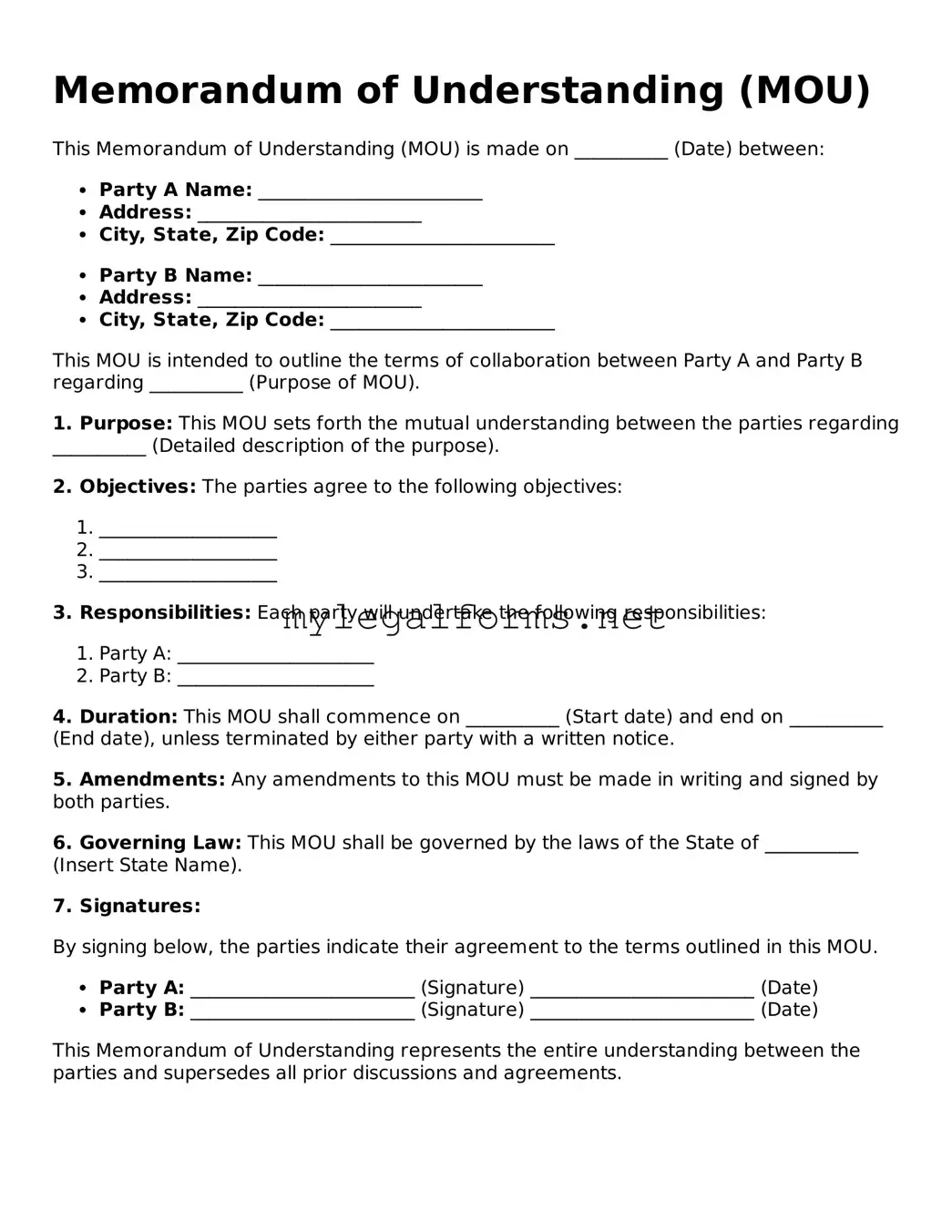Memorandum of Understanding (MOU)
This Memorandum of Understanding (MOU) is made on __________ (Date) between:
- Party A Name: ________________________
- Address: ________________________
- City, State, Zip Code: ________________________
- Party B Name: ________________________
- Address: ________________________
- City, State, Zip Code: ________________________
This MOU is intended to outline the terms of collaboration between Party A and Party B regarding __________ (Purpose of MOU).
1. Purpose: This MOU sets forth the mutual understanding between the parties regarding __________ (Detailed description of the purpose).
2. Objectives: The parties agree to the following objectives:
- ___________________
- ___________________
- ___________________
3. Responsibilities: Each party will undertake the following responsibilities:
- Party A: _____________________
- Party B: _____________________
4. Duration: This MOU shall commence on __________ (Start date) and end on __________ (End date), unless terminated by either party with a written notice.
5. Amendments: Any amendments to this MOU must be made in writing and signed by both parties.
6. Governing Law: This MOU shall be governed by the laws of the State of __________ (Insert State Name).
7. Signatures:
By signing below, the parties indicate their agreement to the terms outlined in this MOU.
- Party A: ________________________ (Signature) ________________________ (Date)
- Party B: ________________________ (Signature) ________________________ (Date)
This Memorandum of Understanding represents the entire understanding between the parties and supersedes all prior discussions and agreements.
